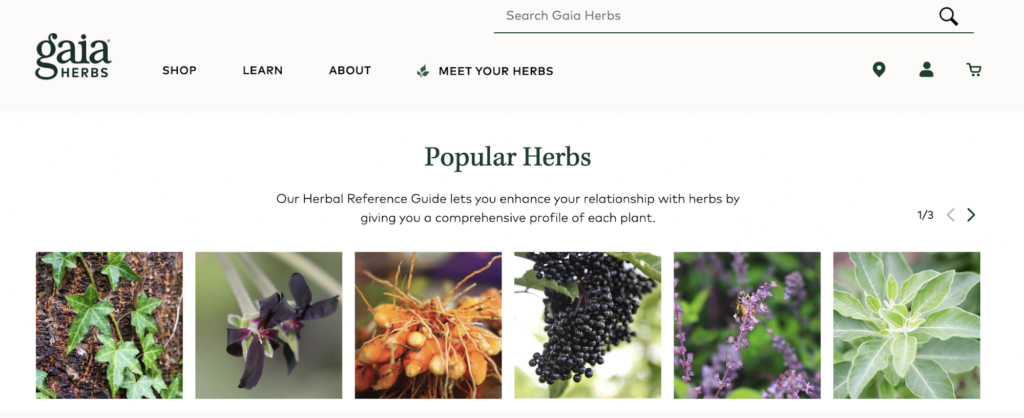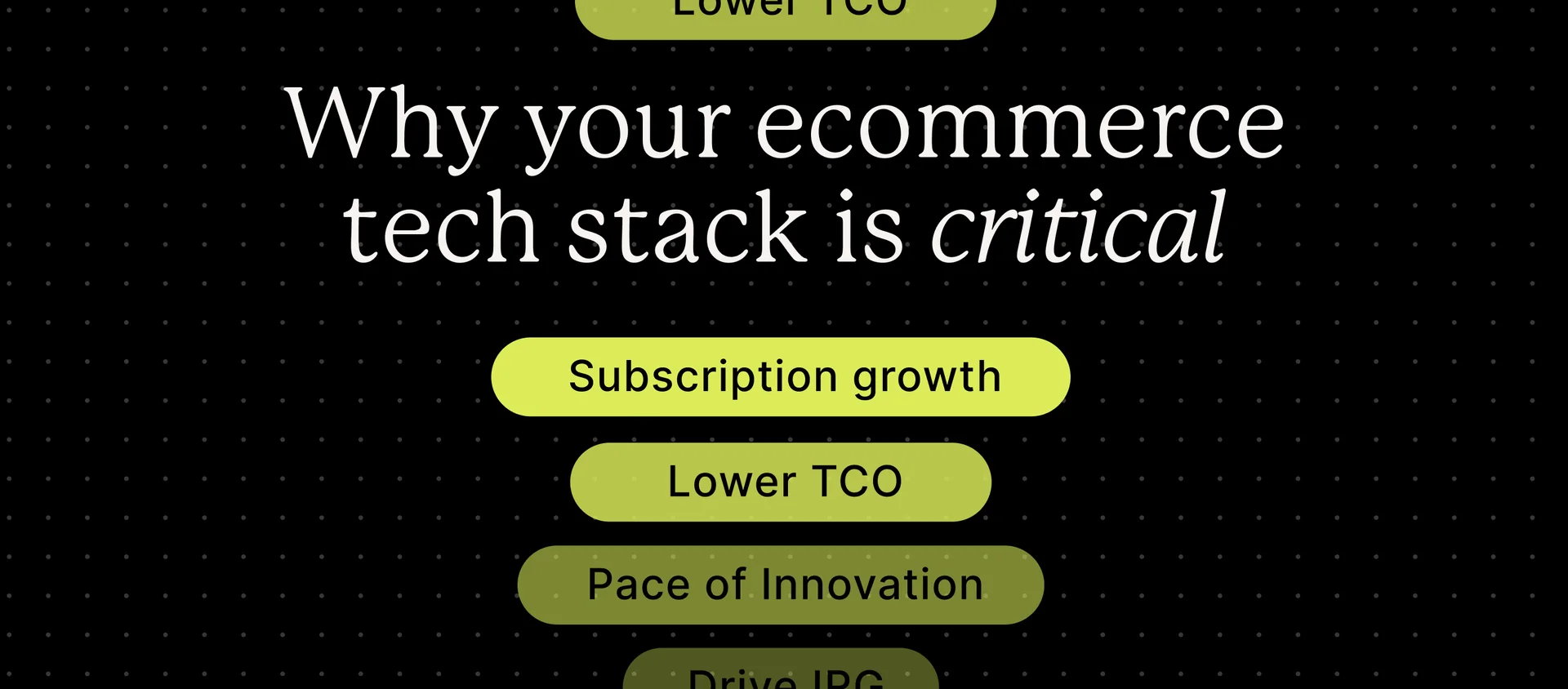The ability to put recurring tasks, like shopping, on autopilot is a lifesaver for consumers with busy lives. Being the health and wellness merchant that ensures customers always have their favorite vitamins/supplements/skincare products on hand whenever they need them—that’s ecommerce gold!
Subscriptions are a natural fit for health and wellness products, making it easier for customers to regularly incorporate products that make them feel good into their routines and lifestyles. Subscriptions can also be a huge win for merchants by boosting customer lifetime value (LTV) and delivering more regular and predictable revenue. The key to successfully leveraging a subscription program? It’s about the execution.
eHouse Studio has a long history of working with Recharge to design and implement subscription programs for health and wellness brands. In light of current industry trends—and because we strongly recommend that most health and wellness brands offer subscriptions—we thought we would share some best practices.
Why make health & wellness subscriptions a priority now
The health and wellness sector is on fire in terms of growth. McKinsey estimates that U.S. consumers spend more than $450 billion annually on wellness products and services and expects that spending will continue to increase by more than 5% each year.
What’s fueling the growth? McKinsey research found it’s predominantly driven by increased prioritization of health and wellness as a response to the pandemic. In addition, as consumers search for products and services, many (primarily millennial and Black consumers) find they aren’t satisfied with the available options and want brands that better fit their needs.
Furthermore, consumers may be looking for products—or bundles of products—that meet multiple wellness needs, such as immune system health and sleep health. They’re seeking ways to tailor the combinations they need, and have these personalized bundles delivered when needed.
The current environment seems ripe with opportunities for health and wellness brands to up their game—with new products, product bundles, cross-sells, services, and customer experiences. A well-executed subscription program can be the engine for all of that.
How to acquire & keep health & wellness subscription customers
There are effective ways and not-so-effective ways to acquire and keep subscription customers. The most critical factor for a successful subscription program is that the customer experience is frictionless along the entire journey, from sign-up to VIP status. By “frictionless,” we mean easy to sign up, but also incredibly convenient for customers to manage their subscriptions as needed, to be responsive to life events like health changes, vacations, moves, etc. Frictionless also means “not boring.” It’s important to find ways to keep interactions with your subscribers fresh and valuable.
So, what’s needed to create a frictionless experience for a successful subscription program? Here are five best practices to get brands started down the right path.
1. Focus on the PDP
The product detail page (PDP) is a workhorse when it comes to subscriptions (and conversions in general). This page is where consumers decide if they want to subscribe when adding a product to their cart. Therefore, it’s important to clearly present the key information that will help consumers feel confident to subscribe.
In addition to critical details like product description, benefits, differentiators, ingredients, and product images, information specific to subscriptions should include:
- Usage details: Include how often a person should use the product, for how long, recommended dosage, quantity in each package, how many days it will last them, etc.
- Subscription options: Enable customers to choose subscribe-and-save options in the buy box.
- Discounts: Show how much the customer will save by subscribing (e.g., save 15%).
- Subscription benefits: Showcase program features like free shipping, easy cancellations, easy skip/delay, etc.
- How the program works: To build trust and answer common customer questions, provide a link to a landing page or flyout that explains the subscription process.
- Customer reviews: Display reviews and customer recommendations to provide social proof for the product.
2. Integrate subscriptions with the Shopify store
Although ecommerce subscriptions are hosted and managed by a third-party platform like Recharge, it’s important that the experience is cohesive when customers sign up for or manage their subscriptions.
eHouse Studio does a lot of work for clients to make everything look and feel branded for a seamless experience. We like Recharge because it’s easy to integrate with Shopify—for example, when customers add a subscribe-and-save option to the cart, they can create their account on Recharge and Shopify’s unified checkout. To enable fast account creation, they only ask for minimal customer information, such as email and credit card.
3. Make subscription management a breeze
The most successful subscription programs provide flexibility to retain customers for as long as possible. Life can be unpredictable. Health and wellness needs may change. If customers can self-manage their subscription to change, skip, or delay a shipment, chances are they’ll do that instead of cancel.
The keys to convenient subscription self-management are two-fold: 1) a user-friendly customer portal and 2) the ability to manage subscriptions via SMS. In the customer portal, information hierarchy is very important and the information customers look for most frequently should be the most prominent, as well as actionable, if relevant. This includes:
- Order frequency: What did I sign up for, can I change it (30-day, 60-day, etc.)?
- Date of next delivery: Can I skip, delay, or set an automatic reactivation date?
- What products are in the order: Can I change or remove, add a one-time purchase, or add an additional subscription product?
- Product recommendations: What are optional products to what I’m already ordering, complementary products, what’s new (e.g., integrate recommendation engine on edit subscription page)?
- Cost: What do I pay for each order and what do I save?
- Delivery address: Can I change it when I move, ship one time to a friend, etc?
BIOHM, one of the world’s leading microbiome companies, provides a great example of a flexible, user-friendly subscription customer portal that’s powered by Recharge and was designed by eHouse Studio.
As mentioned above, some of the most important subscription management features to offer are options to skip or delay a shipment. However, when customers still proceed to cancel, another useful feature to implement is a customer survey to find out why. This gives brands an opportunity to offer an immediate solution (“Did you know you can skip an order?” or “Here’s a product that might better meet your needs.”), as well as to gather feedback that can be used to refine the subscription model, marketing strategy, and more.
4. Integrate subscriptions & loyalty
A loyalty program can provide customers with additional motivation to stay subscribed, for example, by earning points to get further discounts on a subscription order. When tying loyalty and subscriptions together, be sure to add a field in the subscription customer portal for customers to add discount codes, so the discount is automatically applied when the credit card is charged.
eHouse Studio worked with natural health brand Ancient Nutrition and Recharge to integrate Yotpo loyalty and rewards into their customer portal, which enabled customers to easily redeem their rewards points.
5. Keep customers engaged with content
Subscription benefits don’t have to be limited to discounts and free shipping. Engaging and inspiring customers with new ways to use products or tips to maintain a healthy lifestyle keeps the customer relationship fresh and increases LTV—and possibly average order value (AOV) if the content motivates a customer to try something new.
Subscription programs, like loyalty programs, can make VIP customers feel special with personalized or exclusive content that also builds the brand. In addition, communications can be bi-directional and nurture deeper relationships, such as by asking for feedback and reviews.

Do health & wellness subscriptions right
While a subscription program for health and wellness products may seem like a no-brainer, it is important to be strategic and build off of best practices when designing and implementing it. Today’s booming health and wellness market makes it an exciting time to be a merchant in this sector, with opportunities for developing new products and experiences and attracting new customers. A well-executed subscription program can be the mechanism health and wellness brands need to excel.
Sources
[1] Still feeling good: The US wellness market continues to boom (McKinsey & Company)



